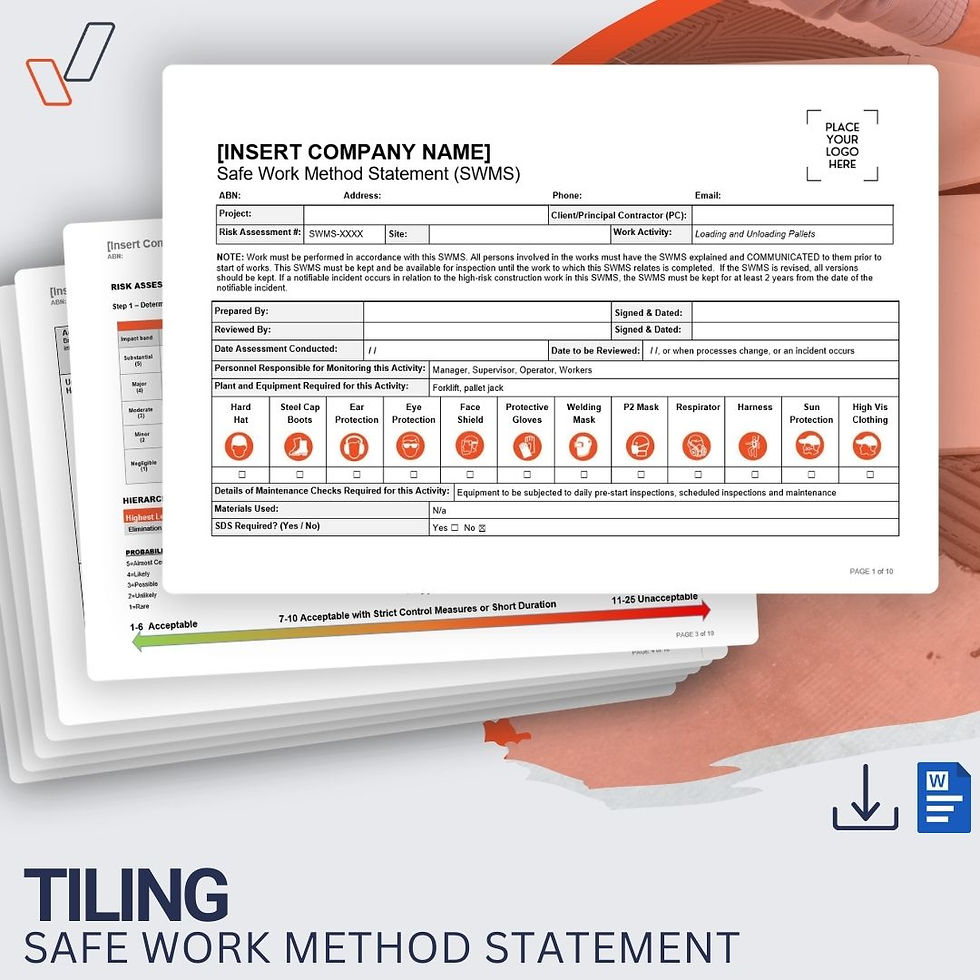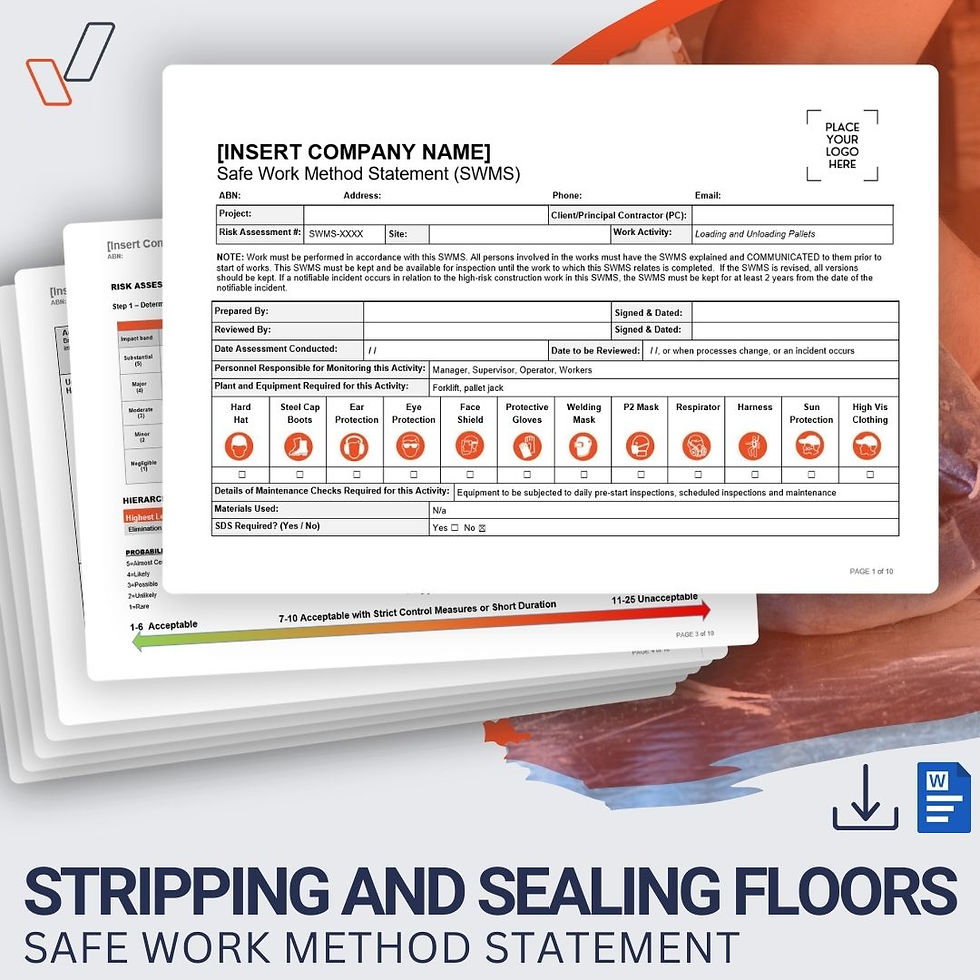This 12-page Refuelling Plant & Equipment Safe Work Method Statement (SWMS) provides the typical safety controls and potential hazards associated with the safe handling and refuelling of plant and equipment using petrol or diesel. It’s designed to help workers mitigate risks such as fire, explosion, environmental spills, and improper handling or labelling of hazardous substances.
Pre-filled, ready to use, and developed by WHS experts, this SWMS assists you in meeting your WHS obligations and maintaining compliance with Australian standards. It’s suitable for use in all Australian states and territories, and is fully editable in Microsoft Word - making it easy to customise with your company name, logo, and site-specific details.
Who This SWMS Is For
Ideal for businesses that use or maintain plant and equipment, including:
Construction companies
Civil and earthmoving contractors
Mining and quarrying operators
Transport and logistics providers
Agricultural and farming businesses
Mechanical and plant hire services
Warehousing and storage facilities
What This SWMS Covers
Planning and preparation of the refuelling area, including SDS compliance and PPE checks
Pre-operating safety checks for fuel containers, hoses, and fittings
Decanting and labelling procedures to prevent misidentification and unsafe use
Storage of fuels and segregation from incompatible chemicals
Fire prevention controls and emergency response actions
Safe manual handling, fumes exposure minimisation, and hygiene measures
Procedures for aligning and manoeuvring plant/vehicles at refuelling stations
Remote area refuelling protocols, including emergency communication planning
Incident response procedures for spills, injuries, fire, or environmental changes
Operator and site responsibilities during inclement weather or equipment faults
What’s Included in Your Template
Step-by-step procedures with identified hazards and safety controls
PPE requirements specific to the refuelling task
Plant and equipment list (storage tanks, fuel pumps, bunding, etc.)
Risk assessment matrix with risk rating calculator
SDS and labelling requirements for chemical handling
Worker sign-off sheet for compliance and accountability
Relevant legislation, codes, and Australian Standards
Environmental protection measures and contingency planning
This SWMS template for Refuelling Plant & Equipment is an invaluable tool for quickly and effectively documenting your WHS systems. Designed for swift editing and customisation, it adapts easily to your operational needs - making it an essential part of your safety management toolkit.
Perfect for tenders, safety audits, and day-to-day operations, this template saves you time and effort while helping your business stay safe and compliant.
Get your Refuelling Plant & Equipment SWMS today and start using it instantly!
Refuelling Plant & Equipment SWMS
We accept the following payment methods:
➡️ Pre-filled and ready to use
➡️ Created by WHS experts, aligned with Australian WHS legislation
➡️ Suitable for all Australian states and territories
➡️ Instant delivery via email.
➡️ Fully Editable (Microsoft Word Format).
➡️ Quickly add your logo and business details.
➡️ Easy customisation instructions included.
➡️ Pay once, use it as many times as you need.
➡️ 12 months free email & phone support.


















